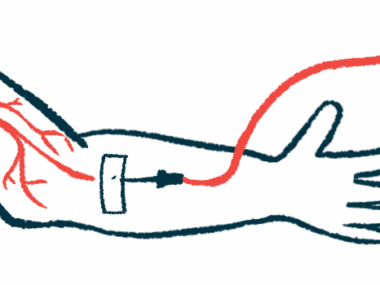Pausing Immunosuppressants Can Help Clear Hep E Infection in AAV
However, patients may experience AAV flares during treatment pause
Written by |

Hepatitis E infection can be effectively managed in people with ANCA-associated vasculitis (AAV) by pausing immunosuppressive therapy, though patients may experience AAV flares during this pause, a new study shows.
“Despite potent immunosuppression before infection, all patients cleared the virus after cessation of the immunosuppressant without additional anti-viral therapy. No patient developed chronic liver disease,” researchers wrote. “Pausing the immunosuppression led to inflammatory flares, indicating that the management of hepatitis E increases the risk for vasculitic disease relapses.”
The study, “Favourable outcome of acute hepatitis E infection in patients with ANCA-associated vasculitis,” was published in the Orphanet Journal of Rare Diseases.
Hepatitis E virus infection can cause acute liver damage
Infection with the hepatitis E virus (HEV) can cause acute liver damage, and in people who have weakened immune systems, the infection can become chronic and lead to liver scarring (cirrhosis).
People diagnosed with AAV are commonly treated with immunosuppressants to help manage the disease by reducing the autoimmune attacks that drive it and potential life-threatening organ damage. However, since they dampen the immune system, these medicines may also increase the risk of infections.
“As there are no reports available on the infection with HEV in patients with ANCA-associated vasculitis, clinical decision making in such cases is based on experiences from other disease entities,” the researchers wrote.
To address this, a team of researchers in Germany reported outcomes of five AAV patients (four men and one woman) who had contracted HEV.
In terms of AAV type, two had eosinophilic granulomatosis with polyangiitis and three had granulomatosis with polyangiitis. Four of them had frequent ear, nose, and throat involvement, two had severe lung manifestations, and one showed severe kidney involvement.
The median age at infection was 57 years (range of 36–71 years), and the median time from AAV diagnosis to infection with HEV was 15 months (range of two months to nearly five years).
At the time of infection, all five patients were receiving immunosuppressive therapies.
Despite potent immunosuppression before infection, all patients cleared the virus after cessation of the immunosuppressant without additional anti-viral therapy
Specifically, one patient was on cyclophosphamide and high-dose prednisolone, an oral glucocorticoid, to induce disease remission. The other four were on maintenance therapy, or long-term treatment meant to keep the disease in remission, that included either methotrexate or mycophenolate mofetil, usually alongside prednisolone.
“Two of the patients on maintenance therapy received cyclophosphamide for remission induction in the past … with one of them having had rituximab in addition,” the team wrote.
At the time of infection, most patients were taking at least one medication (most commonly methotrexate or antibiotics) with the potential to cause liver damage as a side effect.
Four patients experienced HEV-associated symptoms, most often digestive pain, fatigue, headache, and/or abnormally colored urine and stools. The fifth patient had no obvious symptoms of infection.
In all patients, values of liver enzymes were normal prior to infection, showed a significant increase during infection — suggesting liver damage — and normalized levels after about one month. The patient on induction therapy was the only one showing signs of reduced liver function during the infection.
None of the patients had AAV-related symptoms at the time of HEV infection. The one on induction therapy “had reached remission 6 weeks before HEV infection,” the team wrote.
After the diagnosis of HEV, all immunosuppressive therapies except oral glucocorticoids were paused for a median duration of about one month (range of four days to four months). This led to clearance of the virus in all patients, after which treatment was restarted, resulting again in control of AAV.
Largest risk for patients may be increased probability of disease relapses
Three of the patients experienced a worsening of AAV symptoms during this pause in treatment, suggesting that “it might not be the acute hepatic disease that bears the largest risk for the patients’ health but instead the increased probability of disease relapses,” the researchers wrote.
“However, in our cohort, increased disease activity did not result in life-threatening organ manifestations like lungs or kidneys and was efficiently controllable by standard therapy,” they added.
The patients were followed for at least 1.5 years (range of 1.5–12 years) following HEV infection. Routine testing for the virus showed all patients were negative within a few months of the initial acute episode, and none showed chronic liver disease.
However, markers of liver damage began to rise again about a year after infection in one patient, who was diagnosed with a bile duct cancer that had spread to the liver a year later. This ultimately led to the patient’s death, about five years after the initial HEV infection.
It’s unclear whether the HEV infection was connected to this patient’s cancer, the researchers wrote, as the virus is suspected to promote cancer, but there are no reports of it causing this particular type of bile duct cancer.
“Whether the combination of immunosuppression together with a potentially [liver-damaging] medication enhances the risk for clinically relevant hepatitis, as seen in most patients of this study, needs to be addressed in further studies,” the team wrote.







